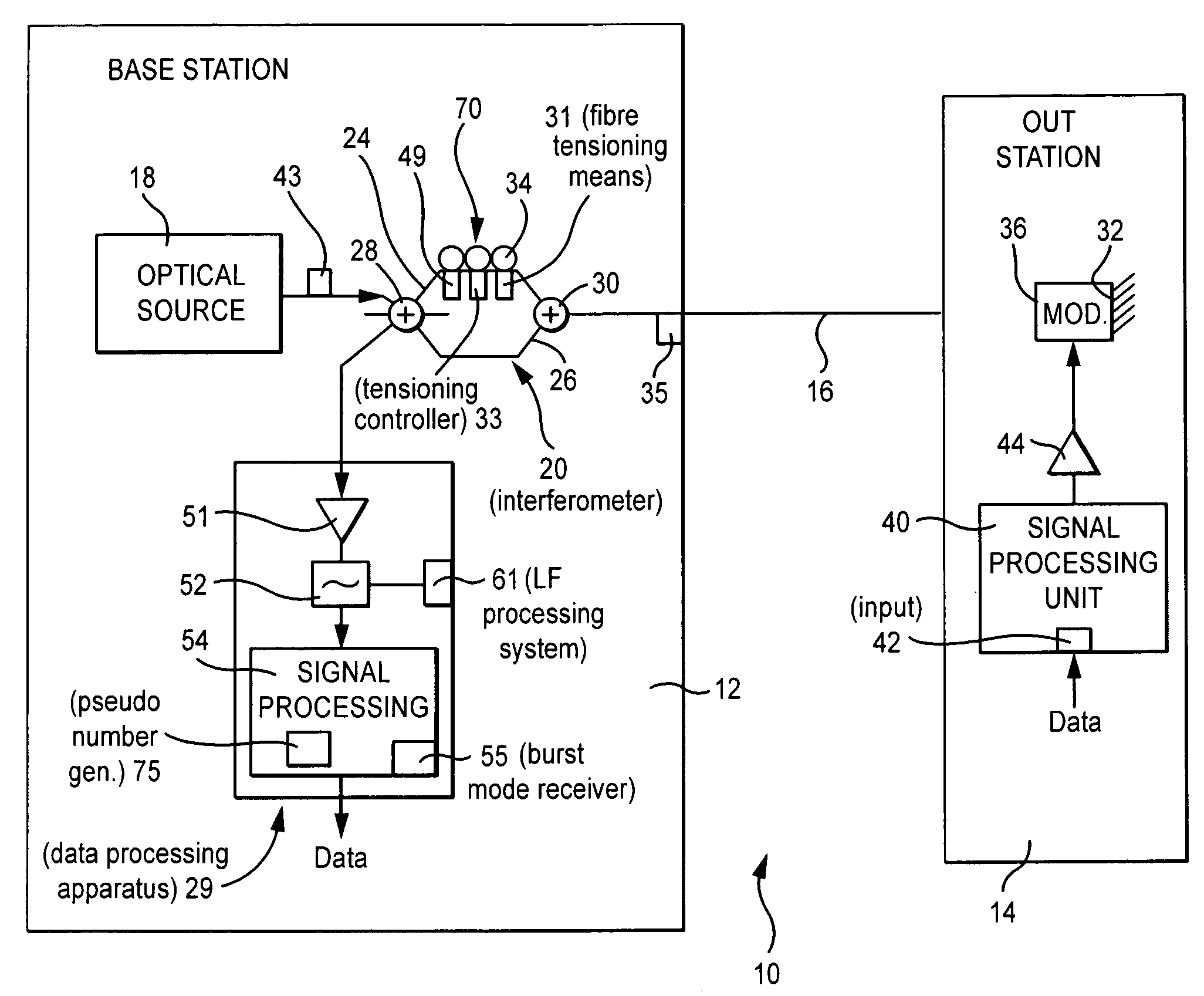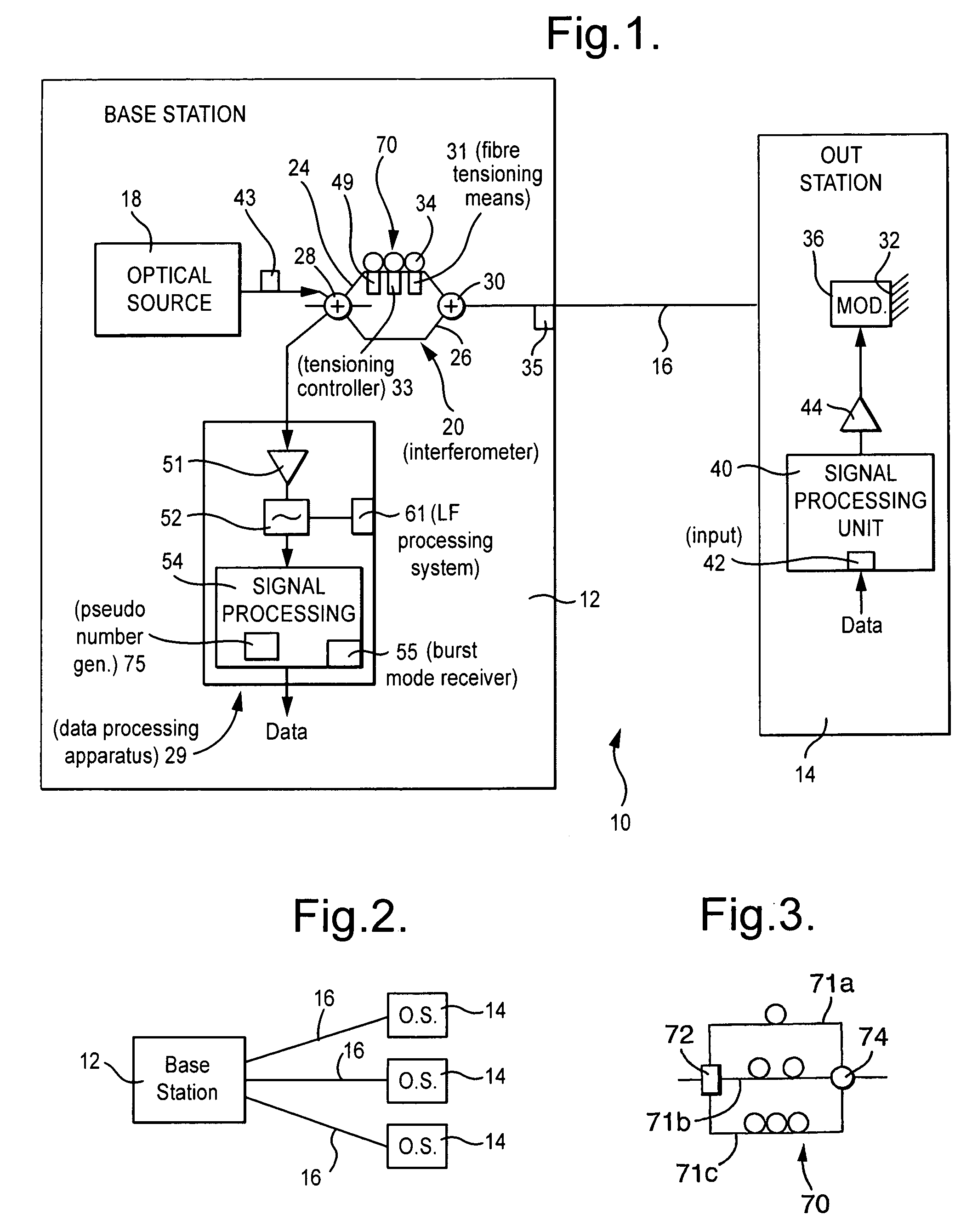Secure optical communication
a technology of optical communication and communication method, applied in the field of secure optical communication, can solve problems such as difficulty for a person wishing to eavesdrop on a communication
- Summary
- Abstract
- Description
- Claims
- Application Information
AI Technical Summary
Benefits of technology
Problems solved by technology
Method used
Image
Examples
Embodiment Construction
[0023]FIG. 1 shows a secure communications system in which a base station 12 can receive data from an outstation 14, over an optical communications link 16 extending between the base station 12 and the outstation 14. The base station 12 includes an optical source 18 with a short coherence time. Wavetrain portions also known as carrier signals (hereinafter referred to as signals) from the optical source 18 are fed to an interferometer stage 20, here a Mach-Zehender interferometer having a first path 24 and a second path 26. The interferometer 20 includes first coupling stage 28 for coupling optical radiation between the optical source 18, the first and second paths 24, 26, and data processing apparatus 29. For light travelling in a forward direction, that is, towards the outstation 14, the first coupling stage 28 acts as a directional power (intensity) splitter, channeling light from the optical source 18 to each of the paths 24, 26, the power to each path being shared in a predeterm...
PUM
 Login to View More
Login to View More Abstract
Description
Claims
Application Information
 Login to View More
Login to View More - R&D
- Intellectual Property
- Life Sciences
- Materials
- Tech Scout
- Unparalleled Data Quality
- Higher Quality Content
- 60% Fewer Hallucinations
Browse by: Latest US Patents, China's latest patents, Technical Efficacy Thesaurus, Application Domain, Technology Topic, Popular Technical Reports.
© 2025 PatSnap. All rights reserved.Legal|Privacy policy|Modern Slavery Act Transparency Statement|Sitemap|About US| Contact US: help@patsnap.com


